Split is a city which is difficult not to fall in love with. I visited Croatia in April 2017, and made the following photographs that you will see in this photo essay.
The city of Split is a perfect blend of modernism and traditional culture, co-existing to form an exuberant lifestyle. The city, spread over a peninsula has cool, blue Mediterranean Sea waters on one side and dramatically contrasting coastal mountains on the other that serve as a perfect backdrop to its orange roofed and white walled buildings.
A pleasant climate makes it a great place during spring and early summer, a time when tourists are minimal considering it is not the peak season yet. Visiting and photographing a city during off-seasons gives me the space to relax and move around the city at my own comfortable pace. Being amidst crowds during peak summer is a big turn off for me and my creative juices are flowing the best when I can have my own space to roam around and make photographs.
A Brief History
The city derives its name from a locally found shrub called the spiny broom – after which the Greek Asplalathos and Spalathos were named. Over the centuries, as the City was ruled by different empires, the name changed pronunciations, until finally in the 19th the Serbo-Croatian name ‘Spljet’ stayed as the city became a part of the Kingdom of Yugoslavia after the World War I.
Many stories about the origins of the city have been based on the construction of Diocletian’s Palace by the Roman Emperor Diocletian in the 4th Century. However, the city was actually founded by the Greeks much earlier.
Apart from a brief spell of running as a free, independent city in the high and the late Middle Ages Split has been under the rule of many empires, all of which have had a clear influence on different aspects of the city. The city’s history includes the Avars and the Slavs who sacked the Salona region, to the Roman rule around 600-700 CE, the Byzantine Empire, the Venetian rule that lasted till around the early modern period, Napoleon’s rule that included the city in the French Empire, and in the 18th and 19th Centuries, a brief spell under the Hasburg rule followed by a brief spell under the Kingdom of Yugoslavia post World War I.
Much of the city’s industrialization and economic growth took place under the Yugoslavian Federal Government, mostly in the ship-building industry. After the independence of Croatia in 1991, the recession of the 1990’s the economy of the country suffered a severe setback, from which they are still recovering. The focus for the city now is the development of the trade and tourism industries.
Amidst all the independence, new infrastructural and economic advances lies a struggling past. Memories of troubled times are still very fresh in the minds of the Croats, and yet the pace of daily life moves resumes normal routine, like a ray of sunshine that is always there, lining dark clouds, and making life worth smiling for!
Photographing Split
The region of Split has been through an unforgiving history. Yet, today, the city extends a warm welcome to tourists. The locals exude a sunny disposition and love living a life full of fun.
When I began my tour of the city, I, like always, decided to explore my photography opportunities at times when the light was at its best. Most of my photographs were taken during the early morning or evening hours. This photograph of the eastern or silver gate (above) to the old town area of Split was captured at the blue hour (right after sunset) when the sky is blue. This is the time when the artificial lights come on, bathing the gate in a golden glow, giving the blue sky backdrop a perfect contrast.
I took a series of photographs during this particular time. The aim was to capture the beauty of the setting sun and the different hues one gets to experience as the night lights come on.
The geographical setting of Split also adds character to the photographs, as the majestic coastal mountains completes the scenic beauty of the city as in the photograph below.
The same location can look completely different as the twinkling lights come on in the evening (see the 3 photographs above). The reflection of the lights in the sea add splashes of gold, making the image seem like a real life painting where the artist has taken creative liberty to add more colour and make the image pop out.
Perhaps one of the most attractive aspects of the city was how simplicity is woven into the threads of the Croatian lifestyle. Walking through the streets of Split, this was one thing that became clearly evident to me. I was compelled to showcase this simplicity in my photographs. Moreover, it showed me how, despite having a history of struggling for centuries, through the various invasions and rules, the locals live happily within their means.
Despite incurring heavy losses in terms of life, infrastructure and economy during the World Wars, where the city was bombed not only by the Axis forces, but also by the Allies, the fall of the Yugoslavian government and the bombings of the old city centre in 1991 the city has bounced back.
The Croats are passionate about sports, especially football and one can find displays of banners practically everywhere within the residential areas. The scooter on the left (in red) and the banner of Split’s football club on the right wall shows what the city of Split is all about.
The mix of past and present is reflected everywhere. Time is literally preserved here, and centuries can be experienced in the little streets of the city. One can see the progress and modern ideas co-existing.
An example is this photograph of a man walking to work in a suit, contrasts well with the surroundings that give the feeling of an old, quaint town.
I chose to focus on the narrow streets, old houses with small private hanging gardens that are a quiet testimony of the past etched on every nook and corner in Split.
One can see myriad colours, even in a simple scene of a string of clothes hanging between two buildings. While composing this photograph, all I could think of was how peace can reflect even in chaos. Often pictures show what I saw at the time of creating the photograph, but I think the best ones makes the viewer feel as I felt when I was making the photograph.
Places to see
While many think that Split is a city that can be visited in a one day tour, my recommendation would be to spend a minimum of two to three days here. One can get absorbed in the city, as there are many simply amazing sights to see and places to visit.
The first is Diocletian’s Palace and the Riva waterfront. The waterfront is situated right in front of the Diocletian’s Palace, which is an obvious visit in Split. Like the palace itself, the waterfront too has undergone numerous changes in terms of infrastructure and functional use through the centuries, and is today, along with the palace a UNESCO World Heritage Site.
Another important visit is to the San Domino Cathedral. One fond memory was when the bells went off, while I was descending down the stairs of this tower in Split, the bells went off and it was very loud. I made a few photos from the top showing the bells going off, before I had to cover my own ears.
Finally, the Marjan hill is a photographer’s dream come true. This photograph was taken after the sun has gone down and the city is lit up. A lone tourist is enjoying the view of the city from the spot where I took the previous 2 Marjan hill photographs. I took a step back to include the tourist and it added depth to the image. The outcome was a photo different from the otherwise postcard like photos one generally sees.

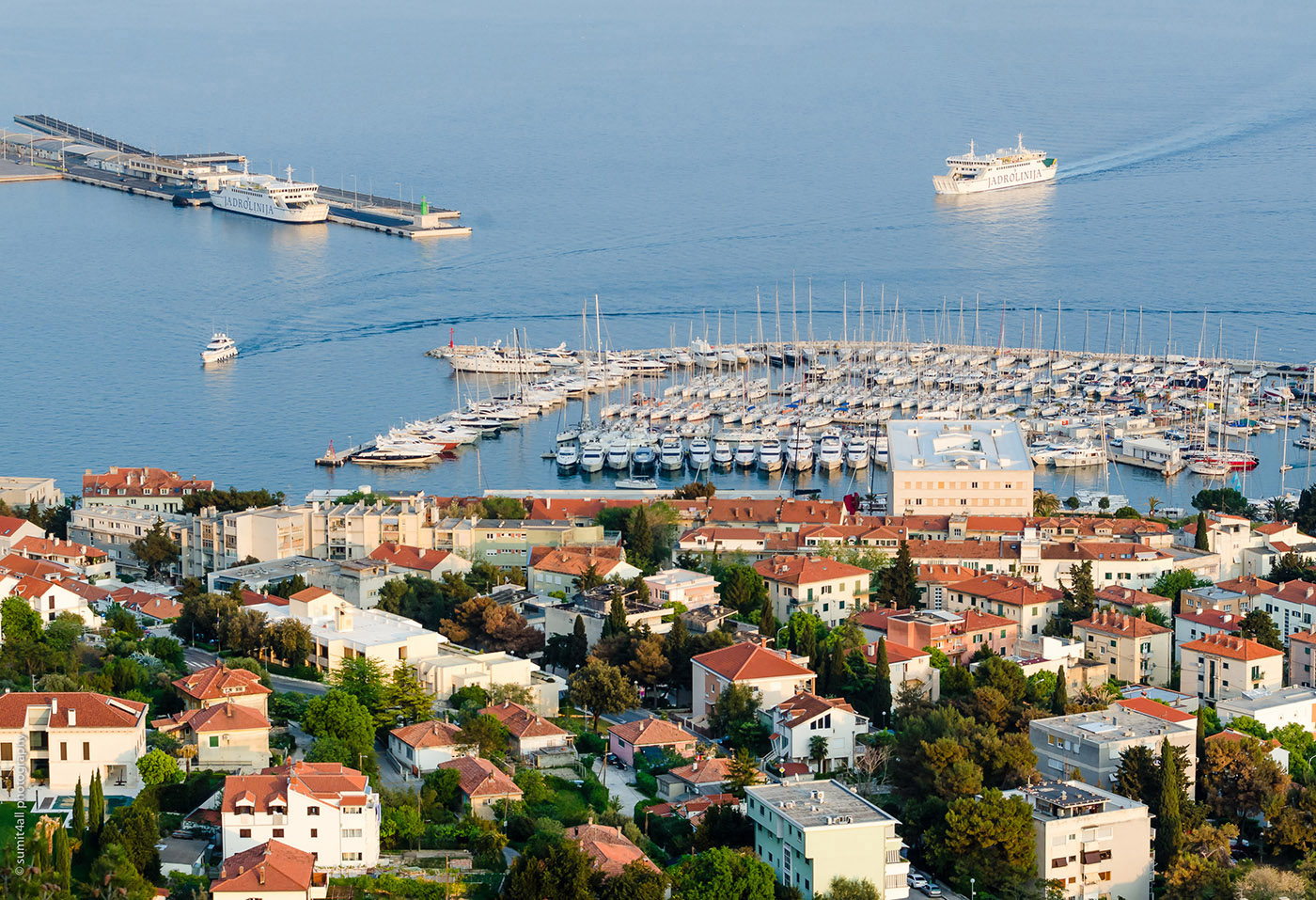
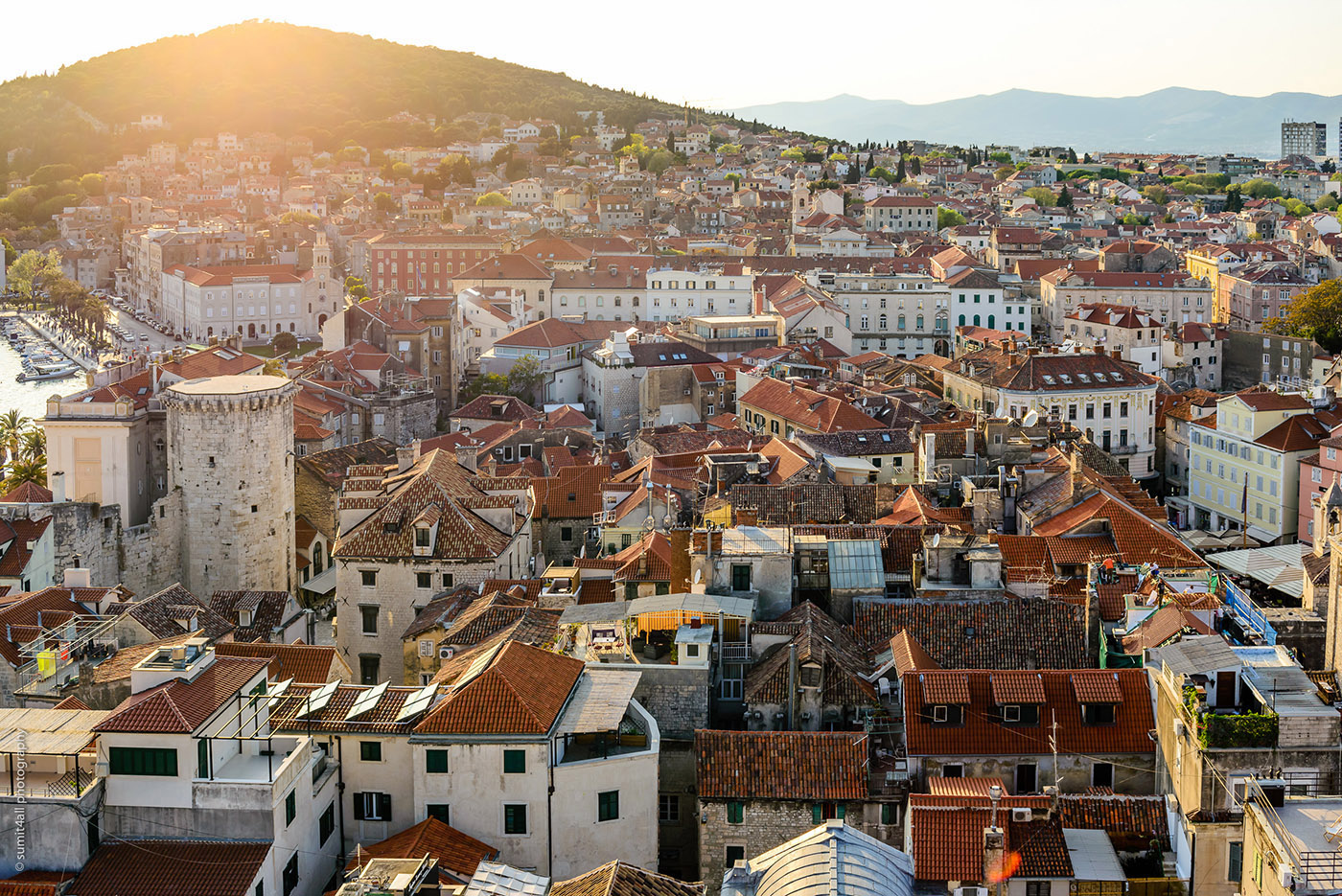
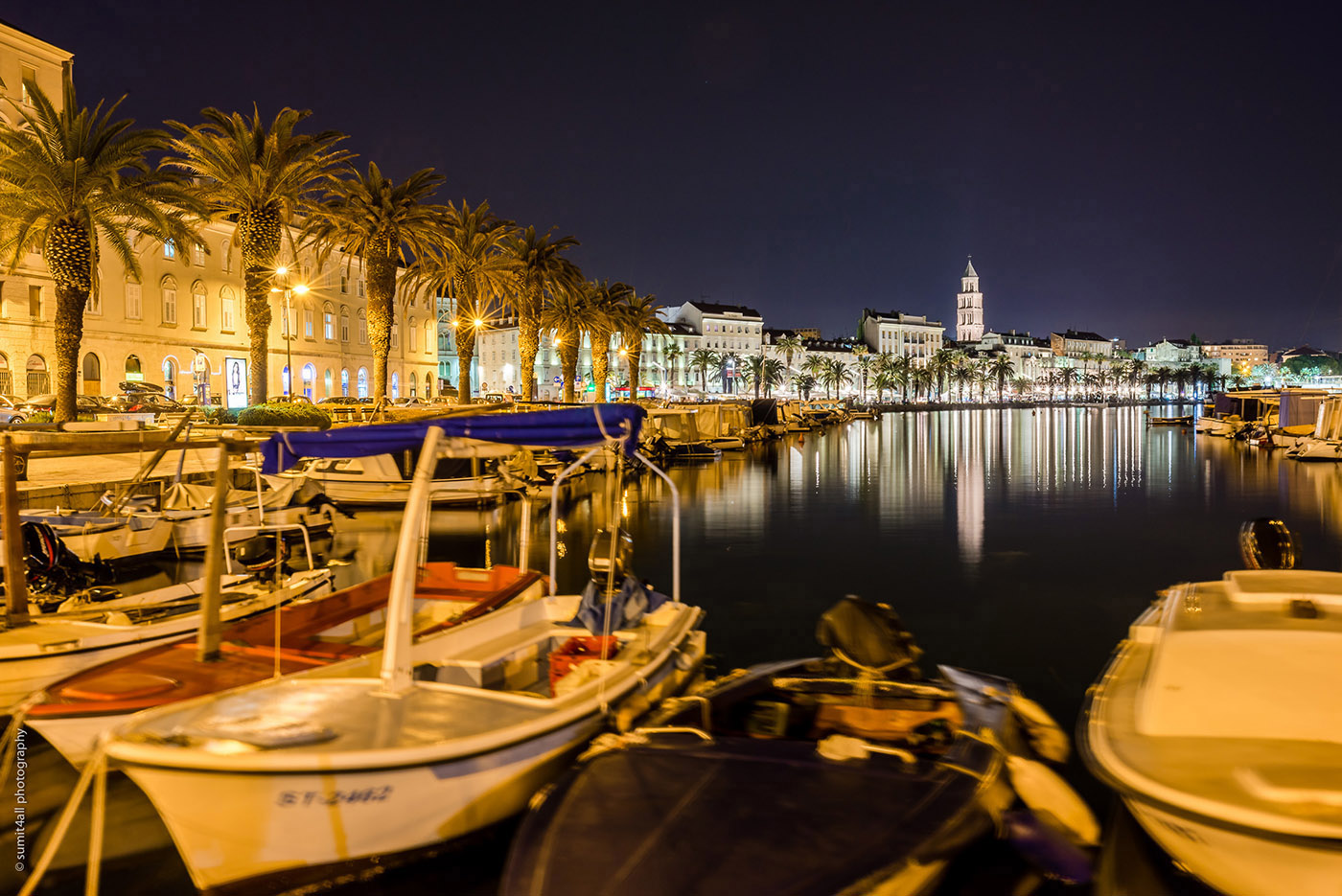
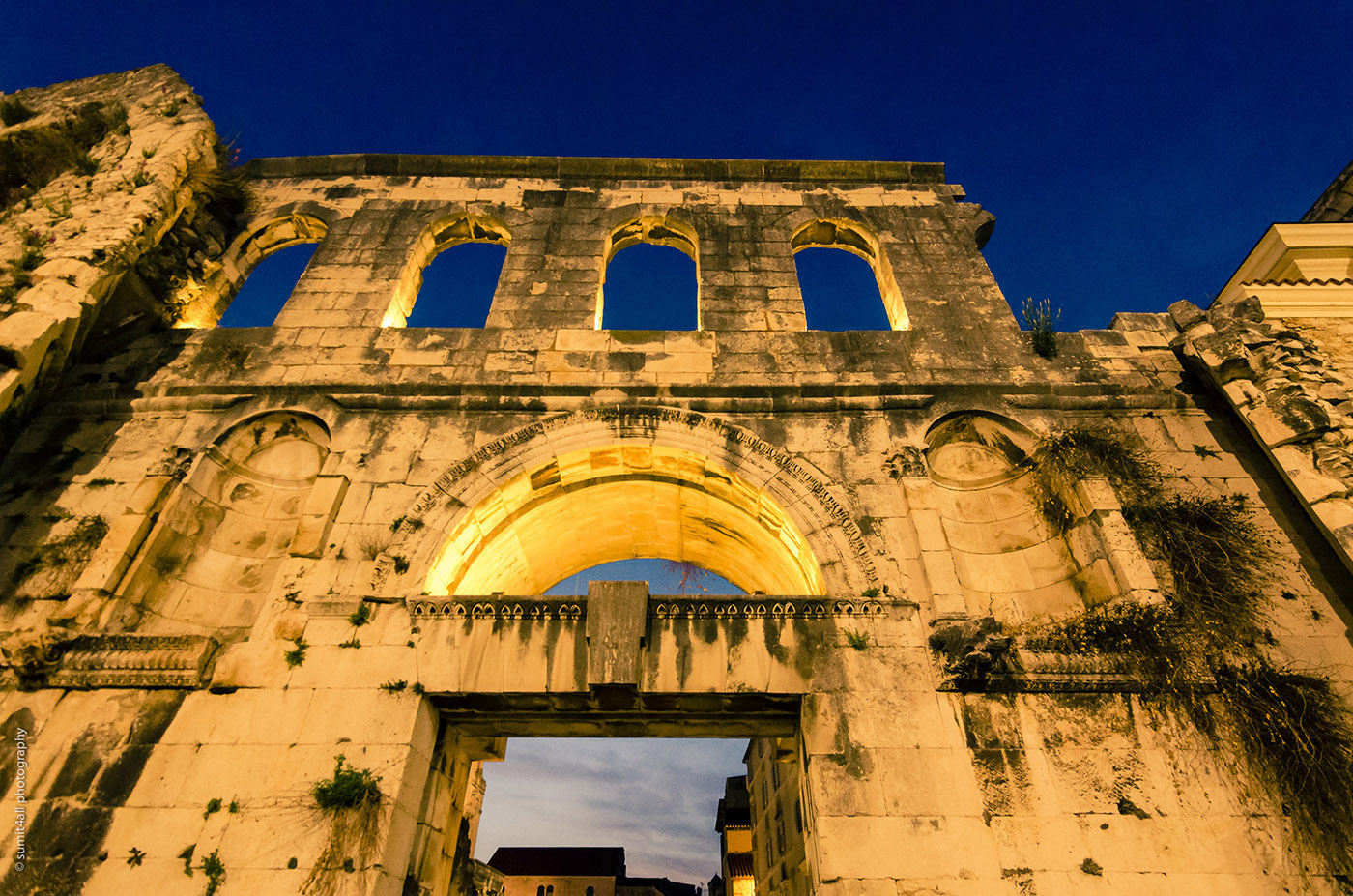
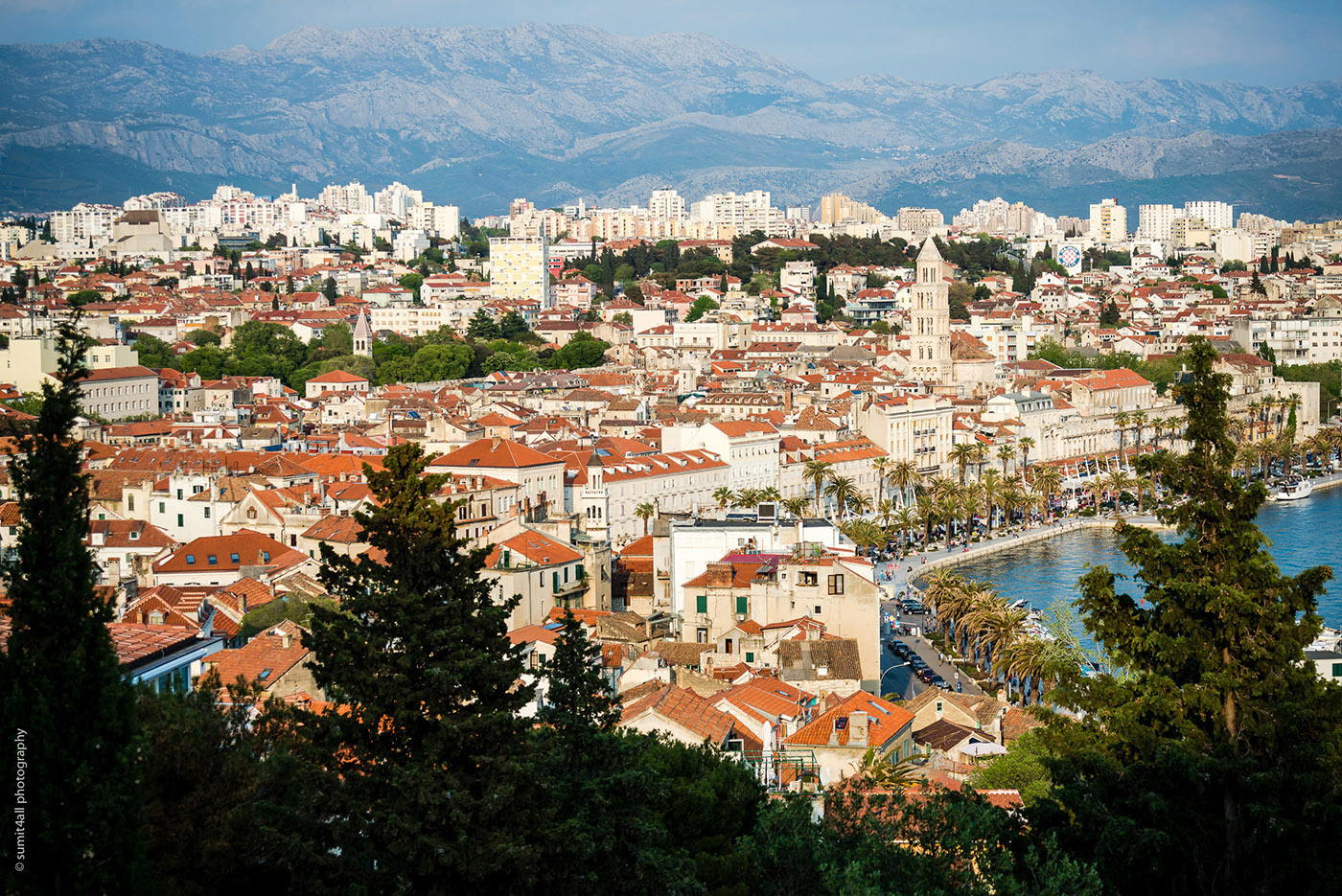
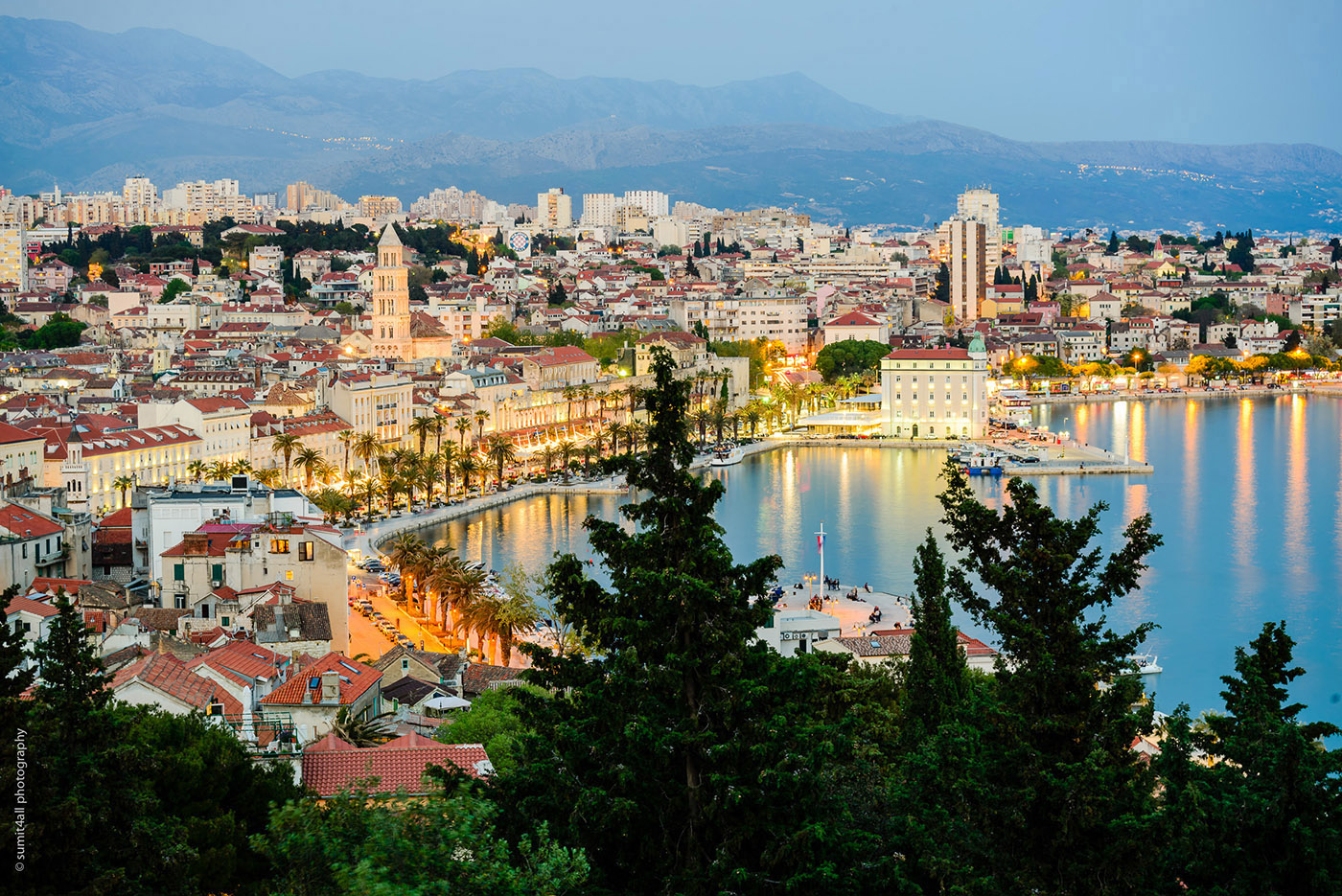
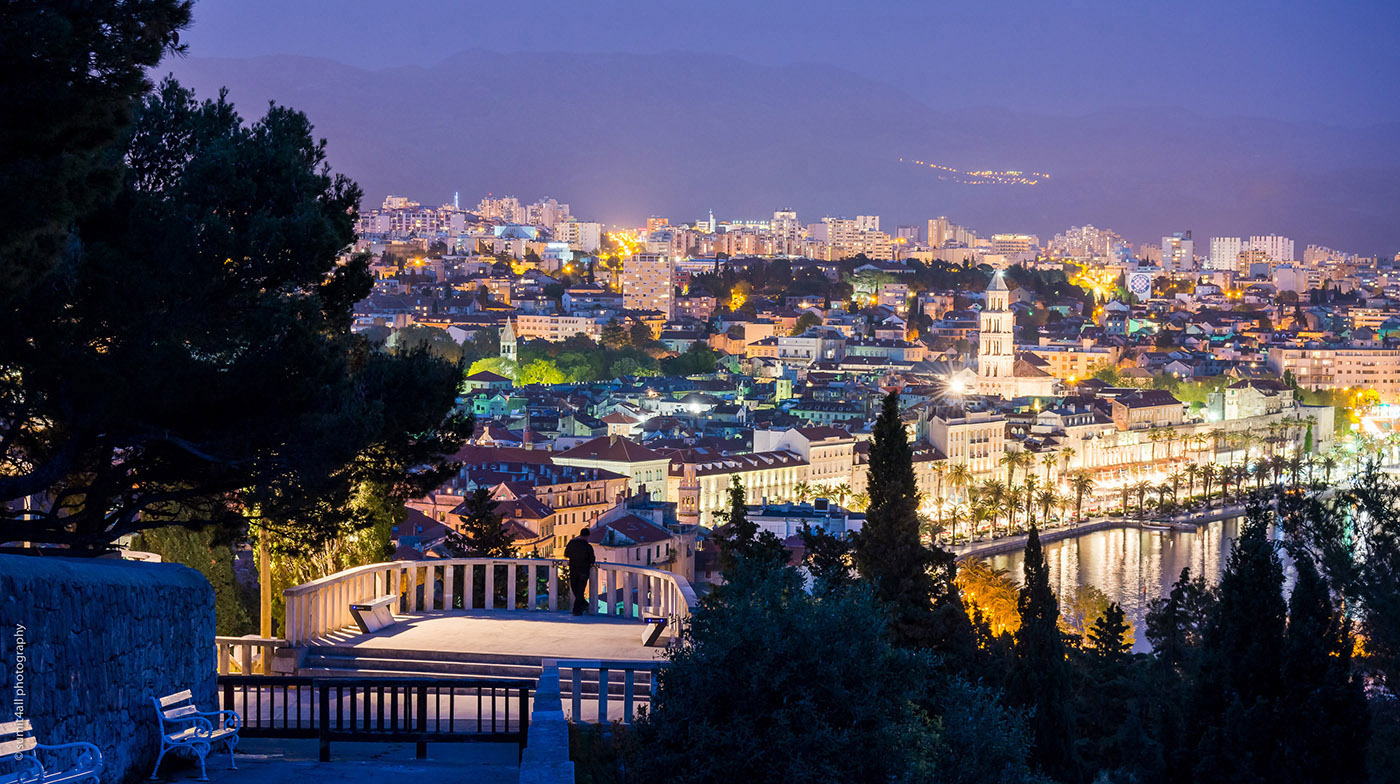
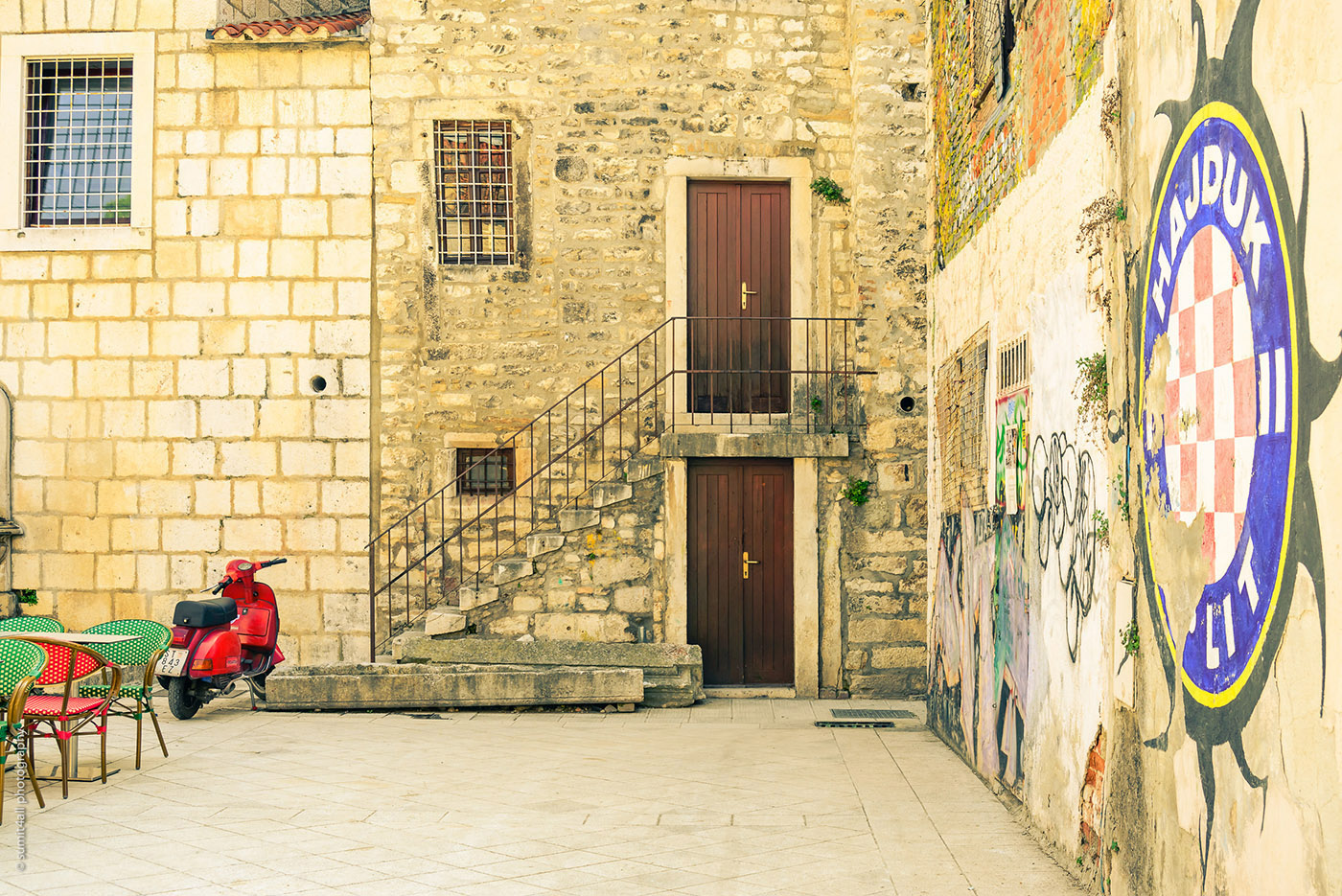
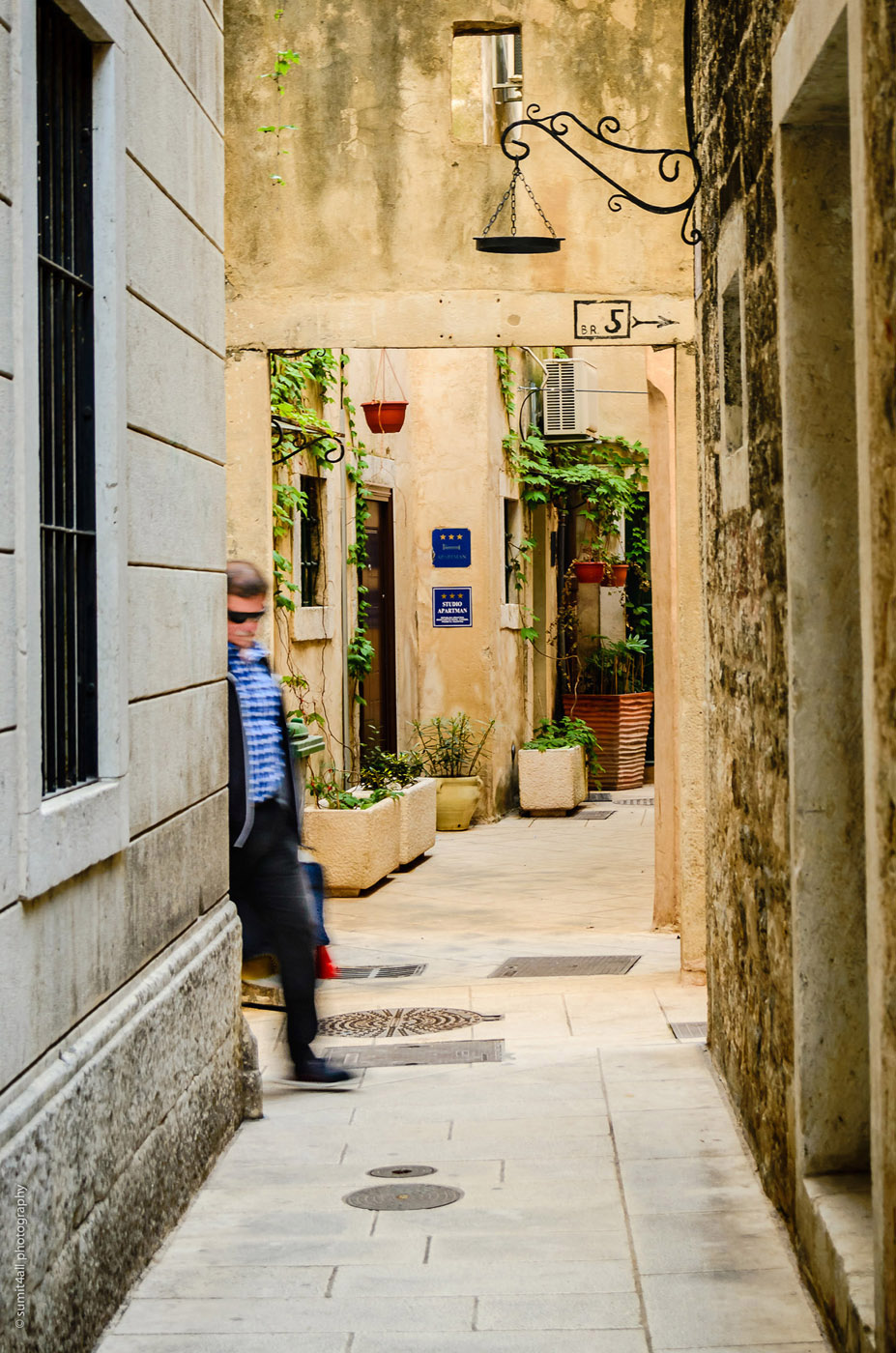
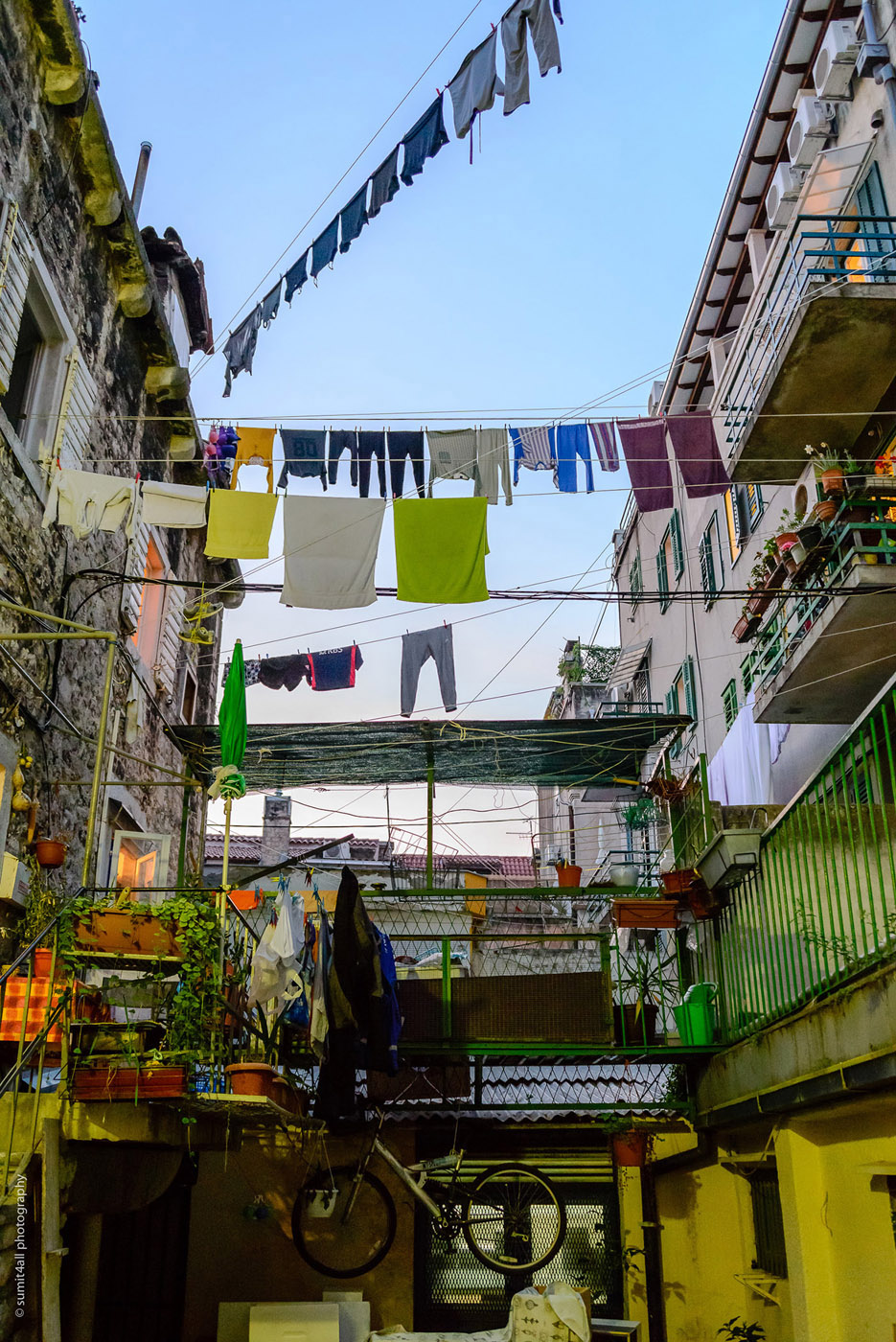
Incredible. Thank you. I love this kind of photography and you have taught me a few tips to enhance my own attempts to capture on my smart camera. We are currently in omis and planning a trip into split; (ironic that, this name represents a ‘torn’ or ‘divided’ country and culture) yet there remains small fragments of how things ‘really are as they were and should be within the people‘ despite disruption and controlled leadership over the centuries…so bless this fragile country and it’s people whom appear to be quiet, neutral, respectful & dignified. I feel they are not impressed by anything yet so warm and welcoming to all. I am humbled to have witnesssed a small group of middle to senior aged men at what is probably their local pub. As I walked by they began to sing. Coming together, Reflective in their eerie yet harmonious soulful tone, a small group singing songs randomly straight from the heart, with other locals joining in down the street, solely for the purpose too remember, bring together and to sing & ring along with the bells into the night their own private memories and whispers.
I feel I can relax on my trip as your photos perfect for me, I now plan to challenge myself to snap a few. sadly I am dependant quite heavily on 2 crutchesso a bit awkward to try and copy your shots and again thank you because if I can’t I have your photos to remember with, so I can relax and get all spongy to Simply be and take it all in.